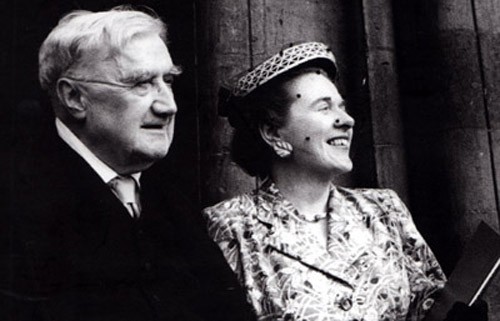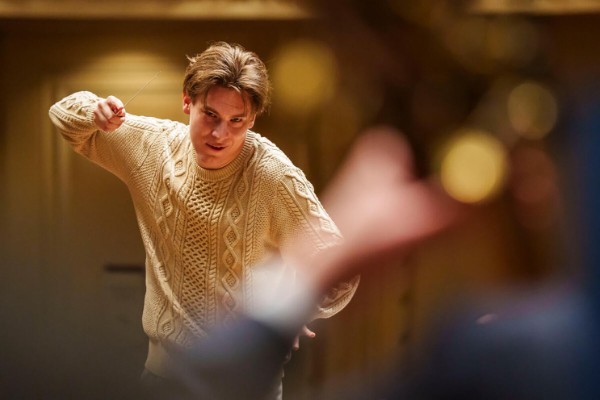The relationships between composers and their family members are always fascinating.
Those family dynamics tell music lovers valuable information about the so-called Great Composers’ characters, priorities, and inner lives: what things meant the most to them, what moved them, and what kinds of people they were offstage.
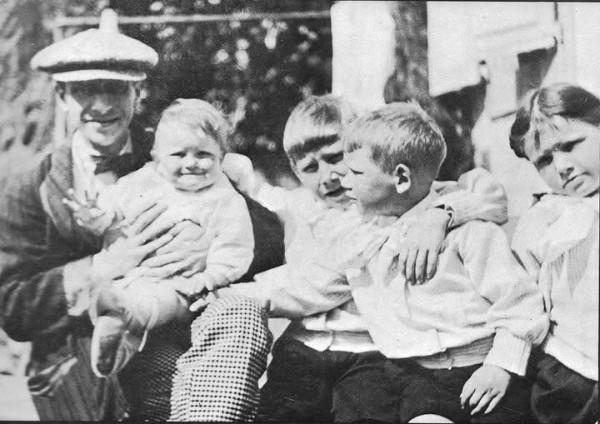
Stravinsky and children
Today, we’re looking at the lives of Igor Stravinsky’s four children, as well as the complicated – and oftentimes tragic – dynamics between them all.
Igor Stravinsky Gets Married
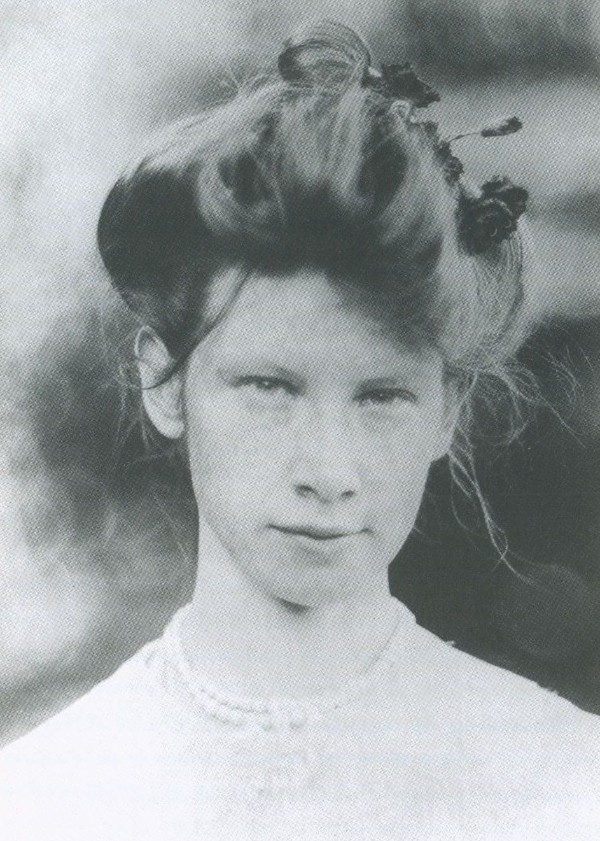
Yekaterina Stravinsky, 1907
Igor Stravinsky met his future wife, Yekaterina Nosenko, on a family trip in 1890, when he was eight and she was nine. They were first cousins.
Stravinsky later recalled:
“From our first hour together, we both seemed to realise that we would one day marry – or so we told each other later. Perhaps we were always more like brother and sister.”
They enjoyed playing piano duets together, and both were very artistic. In fact, before her marriage, Yekaterina Stravinsky studied painting at the Académie Colarossi for five years.
They were engaged in the summer of 1905 and married in January 1906. Because Russia did not allow marriage between cousins, they went to a church just outside of St. Petersburg and hired a priest who didn’t inquire as to their backgrounds. The only witnesses were the sons of Stravinsky’s composition teacher, Nikolai Rimsky-Korsakov.
Their marriage was both tragic and turbulent. They ended up having four children together.
Théodore Stravinsky
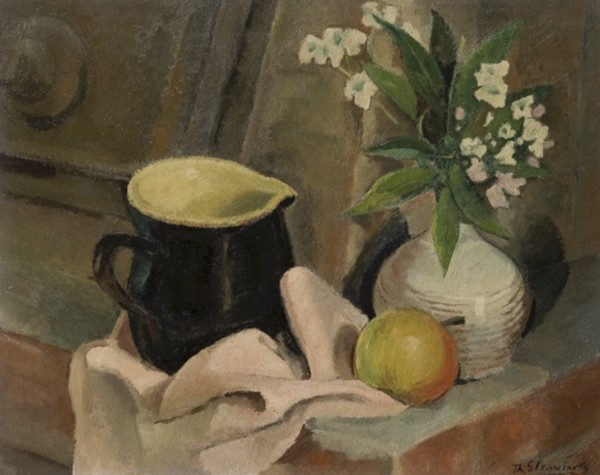
Still Life by Théodore Stravinsky, 1908
Igor and Yekaterina’s first-born child was a boy born in 1907. They named Théodore after Igor’s father, who was a famous operatic bass.
When World War I began, the Stravinskys moved to France and then Switzerland. Théodore ended up taking after both his mother and father, studying piano and painting.
Eventually, he had to choose between the two. When he was thirteen, he confessed to his father that he wanted to be an artist. Unlike many fathers in art history, Igor was encouraging.
One of his cousins wrote to the broader family in 1926:
“Théodore has given up music lessons, as he’s taking painting so seriously. But he understands music very well; he’s musically educated, and he seems to me very talented.”
In 1927, at the age of twenty, he had his first solo exhibition in Paris. Afterwards, he studied at the Académie André Lhote in Montparnasse for two years.
He met Denise Guerzoni in 1934 and married her in 1936. Together they put out a book about the Stravinsky family that included many photographs.
When World War II broke out, Théodore enlisted in the French army. However, he had health issues that kept him from serving for long, and by 1940 he was discharged.
His life changed after 1943, when his father urged him to adopt his orphaned niece, a little girl named Catherine. Théodore and Denise raised Catherine in Denise’s hometown of Geneva.
Decades later, Théodore’s granddaughter would recall:
“Although son of a genius, Théodore was never crushed by the strong personality of his father. He was completely free and knew how to assume this independence all his life through his work.”
Ludmila Stravinsky
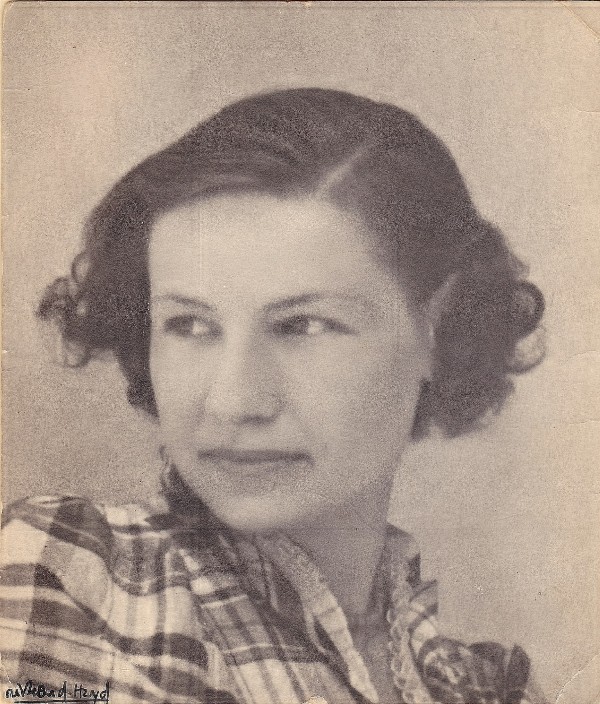
Ludmila Stravinsky, 1930
The Stravinskys’ second child was Ludmila, born in 1908. Like her older brother, she also learned the piano. In 1917, Igor wrote a Berceuse (lullaby) for voice and piano and dedicated it to his daughter.
At a Parisian salon evening in the 1930s, she met trilingual Russian poet Yuri Mandelstam, who was studying in Paris after being exiled from post-Revolutionary Russia. The two fell in love.
His family was Jewish, but he converted to the Orthodox Church before marrying Ludmila in 1935. Two years later, they had a daughter named Catherine, whom they nicknamed Kitty.
Their marriage lasted for a tragically short time. In 1938, Ludmila came down with tuberculosis and died at the age of twenty-nine.
Yuri barely had time to process his wife’s death before the Nazi invasion of Paris. In 1942, he registered as a Jew. On March 10, he was found to have violated the 8pm curfew for Jews by going upstairs to visit a fellow poet. He was arrested and sent to the Drancy internment camp in a northeastern suburb of Paris.
The French police were in charge at Drancy until July 1943, when control passed to the German Army. A few months later, in October, he was sent to the Jaworzno concentration camp, a subcamp of Auschwitz. He died there in the gas chambers.
Théodore Stravinsky stepped in to raise the orphaned Kitty.
Sviatoslav (Soulima) Stravinsky

Sviatoslav (Soulima) Stravinsky
The Stravinskys’ third child, Soulima, was born in September 1910 in Switzerland.
Just as Théodore had gravitated toward his mother’s art of painting, Soulima gravitated toward music-making and composition.
He studied piano with teacher Isidor Philipp, a Jewish-Hungarian pedagogue.
Isidor Philipp was closely connected to many of the stars of the music world: he had studied under students of Chopin and Liszt, had studied directly under Camille Saint-Saëns, and had attended the Paris Conservatoire with his good friend, Claude Debussy.
Soulima’s fellow Philipp students included Aaron Copland, Messiaen’s wife Yvonne Loriod, and even humanitarian Albert Schweitzer. Soulima was in an envious position to soak up a wide range of musical influences in Philipp’s studio.
On the composition end, he studied with Nadia Boulanger, possibly the most influential teacher in music history. Her students included such diverse personalities as Aaron Copland, Philip Glass, Astor Piazzolla, and Virgil Thomson.
In 1934, when he was in his mid-twenties, Soulima appeared in Paris to play his father’s Concerto for Piano and Winds, the Capriccio for Piano and Orchestra, and the Concerto for Two Pianos. Four years later, he’d record them, with his father on the podium.
Their collaboration extended beyond Igor’s work. Here’s a recording of a Mozart fugue in C-minor, recorded in 1938.
Igor & Soulima Stravinsky Play Mozart’s Fugue in C minor K 426
The following year, Igor left Europe for the United States, but Soulima chose to stay behind and enlist in the French army.
After the war, he made his concert debut in 1948, appearing in New York for the first time with the CBS Symphony Orchestra. In 1950, he joined the faculty of the School of Music at the University of Illinois, where he would teach for decades.
In addition to teaching and performing, he also wrote books on music and shared information about what life was like growing up in the shadow of his famous father.
In 1983, he appeared in a PBS documentary called “My Father Stravinsky” with Pinchas Zukerman.
Kennedy Center Tonight: My Father Stravinsky (1983)
He died in 1994.
Maria Milena “Milène” Stravinsky
Maria Milena (“Milène”) Stravinsky was the fourth and final child born of the Stravinsky marriage, in 1914.
Around the time of her birth, Yekaterina came down with tuberculosis and was admitted to a sanatorium in Leysin, Switzerland until her condition improved. Even baby Milène became sick, but ultimately recovered to live a long life.
After World War I broke out a few months after Milène’s birth, the Stravinskys chose to remain in Switzerland.
Like her siblings, Milène also studied music. She was known to have a pretty voice.
She also bonded closely with her mother, hiding behind her when her older brothers would tease her.
When she was a child, the shape of the Stravinsky marriage changed dramatically. In September 1920, the family moved into the home of famous fashion designer Coco Chanel, and Chanel and Stravinsky had an affair.
A trailer to a 2010 biopic about the Stravinsky/Chanel affair
They moved again in 1921 to the city of Biarritz, on the sunny southwestern coast of France. There were many Russian emigres there, but it also, conveniently, was near to Igor’s other love interest, Vera de Bosset.
Igor and Vera began their affair in the summer of 1921. Many of Igor and Vera’s coworkers knew what was going on, but Igor didn’t confess and confirm it to Yekaterina until early 1922. Unsurprisingly, it led to a “tearful, Dostoyevskian scene.”
What made it all worse was that Igor refused to split from Yekaterina. At the time, their four children were fifteen, fourteen, twelve, and eight.
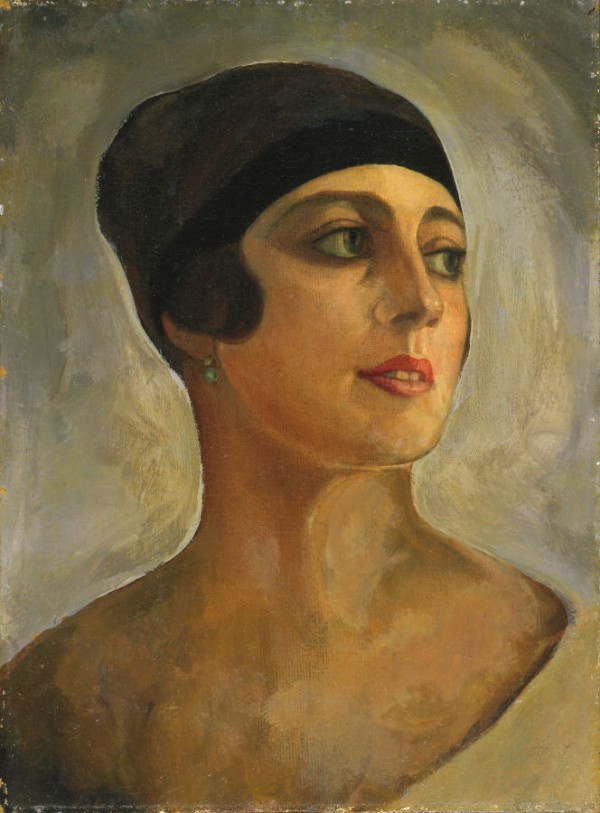
Vera de Bosset
Denise Stravinsky, Théodore’s wife, later wrote movingly of this conflict, which she learned about from the Stravinsky children later:
For [Yekaterina] there now began the long and terrible agony of her life, and a veil of sadness was drawn forever over her beautiful face. For her children’s sake she learned how to conceal her torment, her injury. She wanted to see them playing happily, so she kept her knowledge to herself. She knew that Igor could be fickle, but now she had to learn to think of it in another way. With what grandeur of soul she faced the truth and accepted that the man she loved was leading a double life. From now on, Igor would accommodate two women in his heart…
In 1933, Yekaterina brought Milène to a meeting with Vera de Bosset, and implored her not to think unkindly of her, for the peace of the family. But Milène would always remember how bitterly her mother wept during that trip.
Yekaterina died of tuberculosis in 1939, shortly after her daughter Ludmila did the same.
As for Milène, she married a man named Andre Marion and seems to have lived a relatively quiet life. She passed away in Los Angeles in 2013.
For more of the best in classical music, sign up for our E-Newsletter

